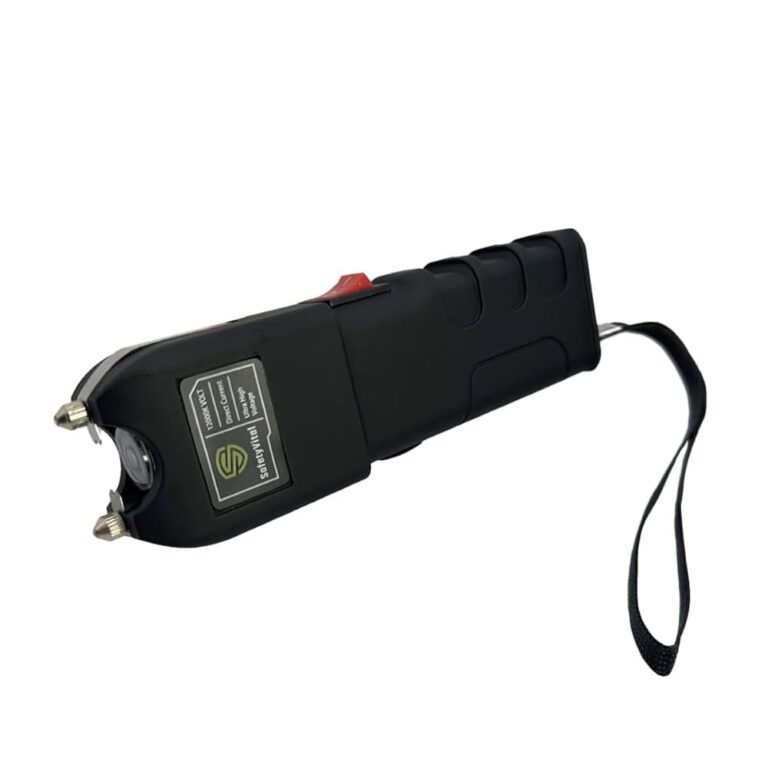Table of Contents
- Understanding the Appropriate Duration for Deploying a Stun Gun in Emergencies
- Factors Influencing Stun Gun Usage Time and Safety Considerations
- Best Practices for Maximizing Effectiveness While Minimizing Risk
- Guidelines for Legal and Ethical Use of Stun Guns in Urgent Situations
- The Way Forward
Understanding the Appropriate Duration for Deploying a Stun Gun in Emergencies
When deploying a stun gun during an emergency, timing is critical to ensure both effectiveness and safety. Most stun guns are designed with a recommended discharge duration of no more than 5 seconds per use. Prolonged exposure beyond this timeframe can increase the risk of serious injury to the target and potential legal ramifications for the user. It’s important to remember that the primary goal is to incapacitate temporarily, providing a window to escape rather than to cause permanent harm.
To maximize safety and effectiveness, consider these key points when using a stun gun:
- Deploy in short bursts: Use quick, controlled shocks rather than continuous discharge to reduce harm.
- Target exposure time: Aim to keep shocks under 5 seconds, and avoid repeating shocks unnecessarily.
- Follow up with escape: Use the momentary incapacitation to create distance and seek safety immediately.
- Know your device: Read the manufacturer’s instructions carefully for recommended usage timelines specific to your model.
Factors Influencing Stun Gun Usage Time and Safety Considerations
Several important factors directly affect the duration a stun gun can be used safely during an emergency. The device’s voltage and amperage output determine the intensity and, consequently, the recommended exposure time. Most stun guns deliver a high voltage with low amperage, designed to incapacitate rather than cause permanent damage, but extended contact beyond a few seconds can increase the risk of serious injury. Additionally, the condition of the target-such as age, health status, and presence of any medical devices like pacemakers-plays a critical role in how long an individual should be subjected to the electrical charge.
To ensure responsible use, keep these key safety considerations in mind:
- Limit continuous discharge to just 3-5 seconds or less
- Use the stun gun only when absolutely necessary for self-defense
- Avoid targeting sensitive areas such as the head, neck, or chest
- Immediately cease application once the threat is neutralized
- Seek medical attention if the target experiences prolonged pain, fainting, or irregular heartbeat
Best Practices for Maximizing Effectiveness While Minimizing Risk
When deploying a stun gun in an emergency, it’s crucial to balance effectiveness with safety. Experts generally recommend limiting the discharge duration to short bursts of 1 to 2 seconds. Extending beyond this timeframe increases the risk of causing unintended injury, both to the assailant and the user. Remember, the goal is to incapacitate temporarily and create an opportunity to escape, not to inflict permanent harm. Be mindful of sensitive areas such as the head, neck, and chest, where a stun gun’s impact can be more dangerous.
To maximize protection and minimize risks, consider these best practices:
- Maintain situational awareness: Only activate your stun gun when you are certain the threat is immediate and close.
- Use controlled bursts: Short, controlled shocks often provide sufficient deterrence without prolonged exposure.
- Keep a safe distance: Maintain the recommended activation range specified by the manufacturer to ensure effectiveness and reduce accidental contact.
- Practice regularly: Familiarize yourself with the device’s operation to avoid fumbling during critical moments.
- Seek medical attention if needed: If you or the assailant experience unusual symptoms post-use, consult a healthcare professional promptly.
Guidelines for Legal and Ethical Use of Stun Guns in Urgent Situations
When handling a stun gun during an emergency, it’s crucial to adhere to legal and ethical practices to ensure safety for all involved. Always confirm that your use complies with local laws, as regulations regarding stun gun possession and deployment vary widely. Additionally, the device should only be employed in situations where there is an imminent threat to your safety or that of others, never as a form of punishment or intimidation. Proper training on stun gun operation not only minimizes risks but also reinforces responsible usage, helping users understand when and how long the device should be activated to avoid unnecessary harm.
Keep these key points in mind:
- Use the stun gun only when legal and in self-defense scenarios.
- Limit the activation time; short bursts (typically 5 seconds or less) are considered safest and most effective.
- Avoid repeated or prolonged shocks, as they can cause serious injury.
- Never use stun guns on vulnerable populations, including children, the elderly, or individuals with known heart issues.
- Report any necessary use to authorities promptly and cooperate fully.
The Way Forward
In conclusion, knowing how long to use a stun gun safely in an emergency situation is crucial for effective self-defense without causing unnecessary harm. Remember, stun guns are designed to temporarily incapacitate an attacker, and brief, controlled bursts-typically just a few seconds-are sufficient to create an opportunity to escape. Always prioritize your safety by following manufacturer guidelines and local laws, and consider additional self-defense training to enhance your response. Staying informed and prepared ensures you can confidently protect yourself when it matters most. Stay safe!Check Our Other Blogs
- StunGun – Your Trusted Source for Stun Guns, Laws, and Self-Defense Tips
- PepperSprayLaws – Your Trusted Resource for Pepper Spray Information
- StunGunLaws – Your Trusted Guide to Stun Gun Legality and Safety





